May 13, 2024 | 02:04 GMT +7
May 13, 2024 | 02:04 GMT +7
Hotline: 0913.378.918
May 13, 2024 | 02:04 GMT +7
Hotline: 0913.378.918
The coral reef ecosystem is regarded as a "sea roof" where aquatic species near the shore often choose to gather for giving birth. Thus, along with its role to help regenerate coastal aquatic resources, the coral reef ecosystem is also considered as a solid “shield” against sea encroachments.
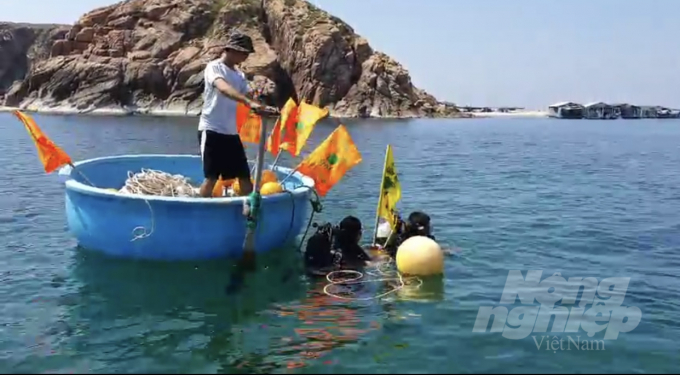
A community group of Nhon Hai Commune (Quy Nhon City, Binh Dinh Province) release buoys to protect the core zone. Photo: A.T.
Recently, coastal aquatic resources have been increasingly depleted. The role of coral is more and more important because it is the place for aquatic species to live and thrive. However, around them are always lurking many of their “enemies”.
Mr. Tran Van Vinh, Deputy Director of Binh Dinh Fisheries Sub-Department said among dozens of thorny starfish varieties (also known as sea urchin), there are few which like to "gnaw" and directly cause harm to the corals. In addition, layers of soil and sand covering their surface also cause death to them. It is worse if cyanide-a very toxic chemical is used for fishing in that sea, the coral ecosystem there will also be affected.
Moreover, the human hobby of raising pets and bonsais are also giving a lot of harm to corals. To increase the value of a bonsai pot, players often take corals to decorate and create a natural scene. Aquariums also need a few coral branches for the fishes to swim making them more beautiful as if they are swimming in the seabed.
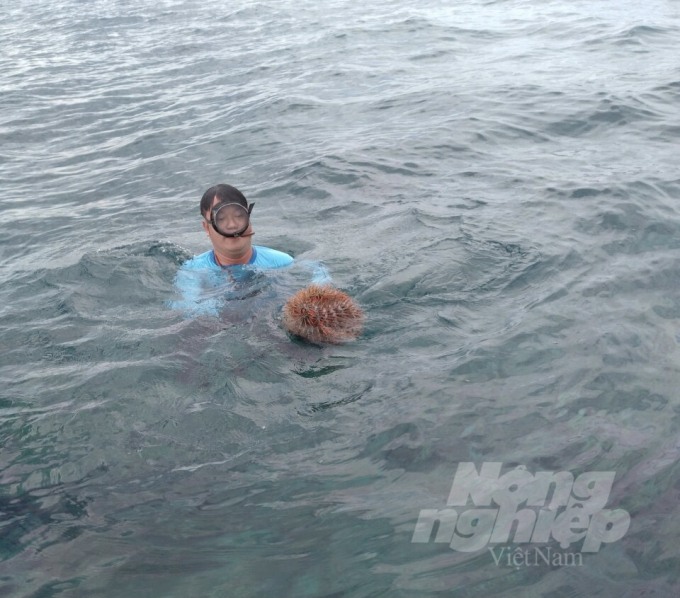
A member of the community group in Ghenh Rang ward (Quy Nhon City, Binh Dinh Province) dives to catch thorny starfish to protect corals. Photo: A.T.
The coral reef is the habitat of all aquatic species, so it has become a target for some fishermen to use explosives to catch fish there. That is also a reason why the "sea roof" was gradually destroyed. In addition, the oil released from fishing boats anchored above coral reefs also pollutes the marine environment and causes death to corals.
With an area of more than 36,000 hectares of sea surface, Quy Nhon Bay (Binh Dinh Province) is a place with favorable conditions for the formation and development of ecosystems.
According to a recent study by the Nha Trang Institute of Oceanography, Quy Nhon Bay has 720 species of 353 genera and 161 families belonging to 7 major creature groups, with about 152 ha of coral reefs distributed along the coast and islands. Around coral reefs are also 16 aquatic breeding areas, including 3 spawning areas of squids and spiny snails, and 13 nursery areas for crabs, lobsters, sea cucumbers, cobia, and grouper...
Binh Dinh has such a vast "sea roof" so if it is well protected, aquatic species can have a great "common house" to freely gather for giving births and thrive. This means coastal aquatic resources will have chances to constantly regenerate ensuring sustainable livelihoods for local people in fishing villages. With the thought of protecting the coral-ecosystem is to protect the "rice cooker" of fishermen, fishing villages in the Binh Dinh coastal areas have set up "bodyguard" teams specializing in protecting and regenerating the coral reef. They are called "Co-management groups of aquatic resource protection".
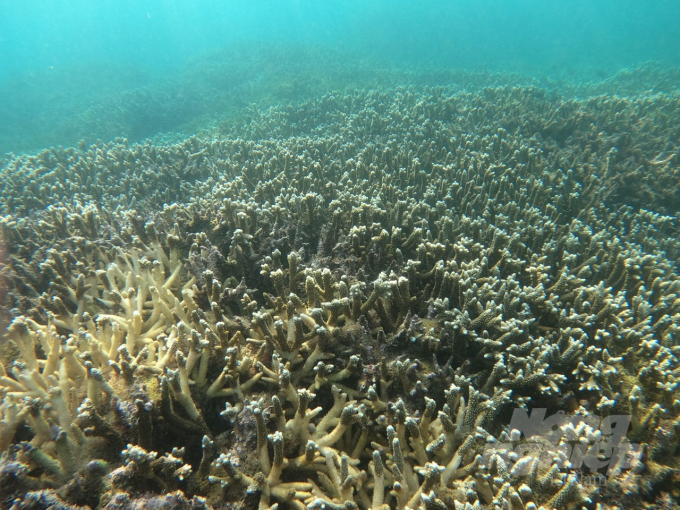
The coral reef ecosystem in the waters of Nhon Chau (Quy Nhon City, Binh Dinh) is very well recovering. Photo: A.T.
Mr. Tran Kim Duong, Deputy Director of Binh Dinh Fisheries Sub-Department said since the end of 2018, Binh Dinh has established 11 models of aquatic resources co-management and protection groups (co-management models) in 20 coastal and lagoon communes and wards with about 500 members. Of the total models, 3 large ones are operating in Tra O lagoon, the northern area of Thi Nai lagoon, and the coastal area of Quy Nhon Bay.
According to the Binh Dinh Department of Agriculture and Rural Development, since such co-management models were built, coastal localities have been more enthusiastic in managing aquatic resources. Local authorities have well performed their role in building legal documents and implementing State regulations, conventions, and in managing aquatic resources. They have actively deployed patrols to prevent and control fishing in prohibited zones, promptly detect and handle violations including those of illegal water surface encroachments and aquaculture.
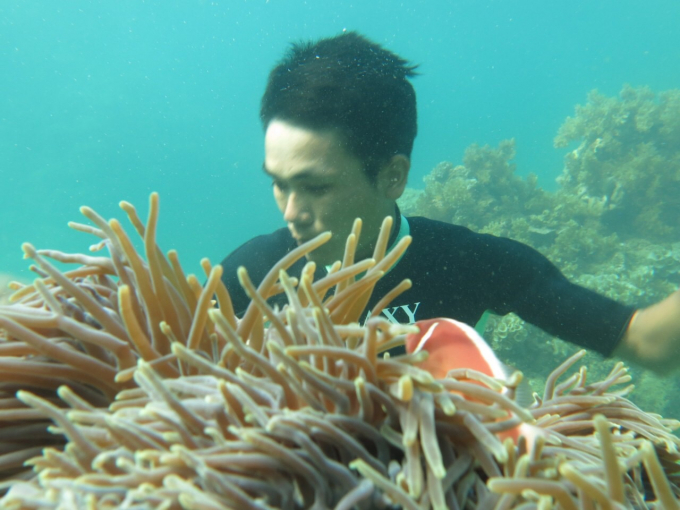
Twice a month, divers in the community group of Nhon Hai Commune (Quy Nhon City, Binh Dinh Province) dive to catch thorny starfish and clean the seabed to protect corals. Photo: A.T.
Activities of those who are known as "soldiers to protect the sea roof" are the most recognizing achievement of the community groups. Among them is Nguyen Ton Xuan Sang, 36, from Hai Bac village, the "leader" of a team of 6 divers and 13 members of a community group who has dedicated to protecting the "sea roof" in Nhon Hai coastal Commune (Quy Nhon City).

The thorny starfish, the harmful aquatic species which often damages coral reefs, is caught by the community group. Photo: A.T.
“Our co-management team not only includes young people, but also the elderly and women. Our job is to release buoys to protect the core zone in April every year. Through September when the wave season is coming, we will collect the buoys," he said.
During the year, twice a month, 6 scuba divers work under the sea to catch thorny starfish and clean the seabed to create conditions for corals to grow. “At the seabed, we walk on coral reefs to pick up trash, plastic bags and beer cans, put them in rackets, and bring them ashore. At the same time, we destroy aquatic objects that are harmful to corals and plant good algae that can clean up the coral's habitat," Mr. Sang shared.
The task of protecting corals in Nhon Ly Commune (Quy Nhon City) is more difficult because there are many tourist attractions there. Visitors often discharge into the sea all kinds of waste harmful to the corals.
Community groups in Nhon Ly emphasize more on propaganda, focusing on the owners of the canoes which carry tourists to the areas. Thanks to their silent works, the coral ecosystem in Binh Dinh over the years has been well protected and gradually recovered.
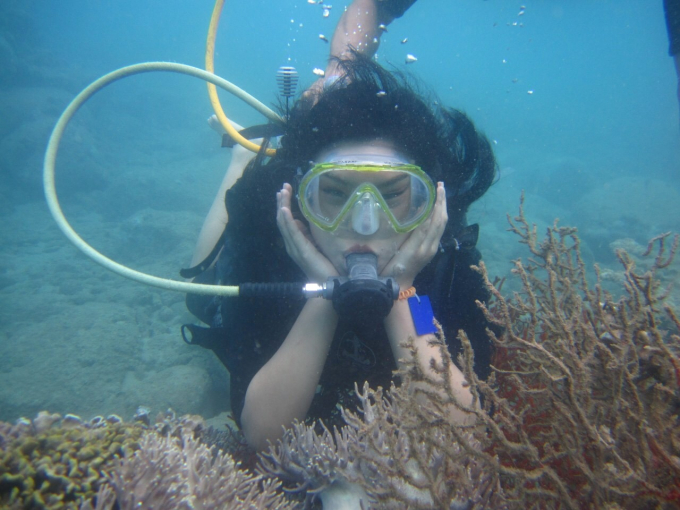
Tourists dive to see corals at the Hon Kho islet in Nhon Hai Commune (Quy Nhon City, Binh Dinh Province). Photo: A.T.
“Currently, coral reefs are gradually restored in protected areas. The coverage of living coral at Bai Dua islet has the best quality, reaching 75.6%, of which 13% is soft coral. Next is 44.3% in small Hon Kho, 31.8% in Hon Nhan - Ghenh Rang, and 23.1% in Bai Truoc - Nhon Chau.
The reason for a low coral coverage at Hon Nhan and Bai Tru is because it has been heavily affected by storms in previous years. Now it is gradually recovering," said Mr. Tran Kim Duong, Deputy Director of the Fisheries Sub-Department, Binh Dinh Province.
Translated by Linh Nguyen
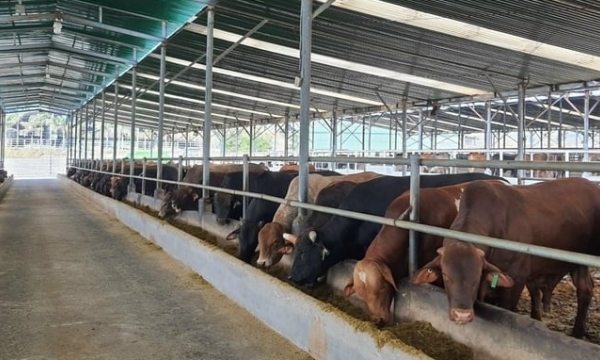
(VAN) The Animal Husbandry Association of Vietnam proposed the incorporation of the livestock sector and facilities in the current greenhouse gas inventory list.
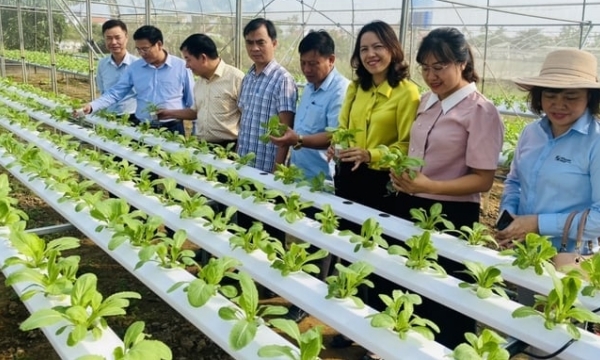
(VAN) By employing modern hydroponic technologies in vegetable farming, Thai Son Cooperative has doubled its profit in after the first crop.
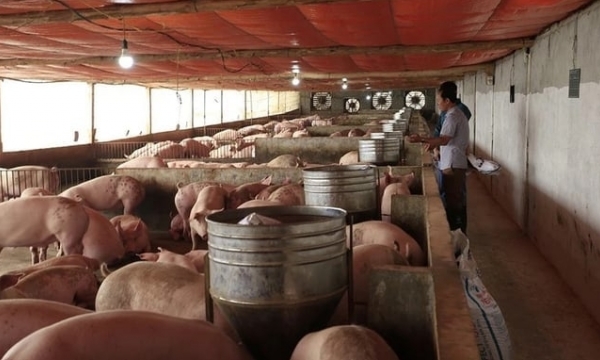
(VAN) Environmental sanitation and disease prevention measures contribute to the development of livestock, resulting in increased benefits and income for farmers.
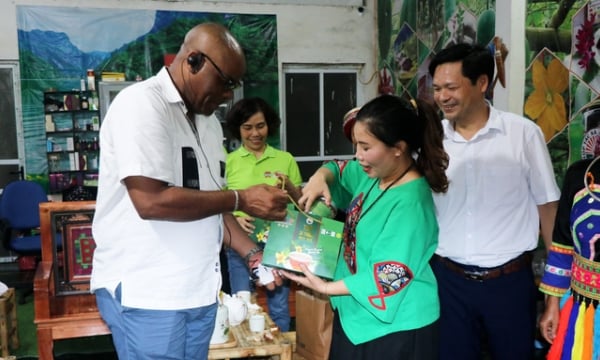
(VAN) FAO in Vietnam assesses that cooperatives and cooperative groups in Bac Kan province have improved their production organization capacity and have many effective and environmentally friendly models.
/2024/05/10/1947-1-151458_6.jpg)
(VAN) It is currently in the middle of the second quarter of 2024, but forest owners in Ha Tinh have not yet been able to pay the 2023 ERPA source due to many problems.
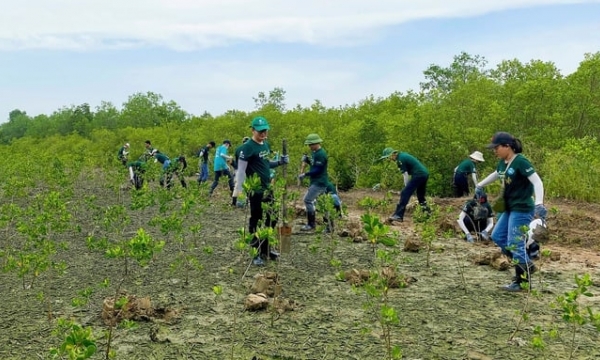
(VAN) Ho Chi Minh City researches a Scheme on covering and expanding Can Gio protection forest. Thus, generating greater value, facilitate carbon credit trading, and reap the benefits associated with forests.
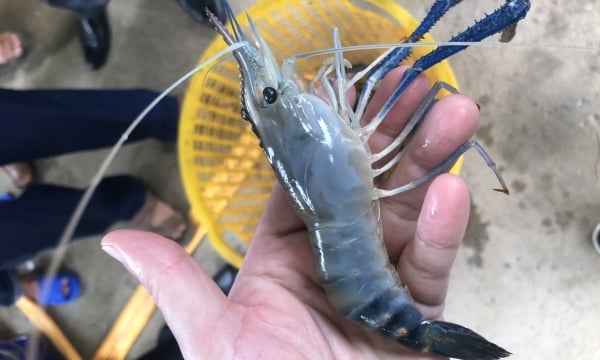
(VAN) The ratio of male giant freshwater prawn over 95%, and the sizes are similar. The average profit per hectare is more than 800 million VND, 30-55% higher than previous approaches.